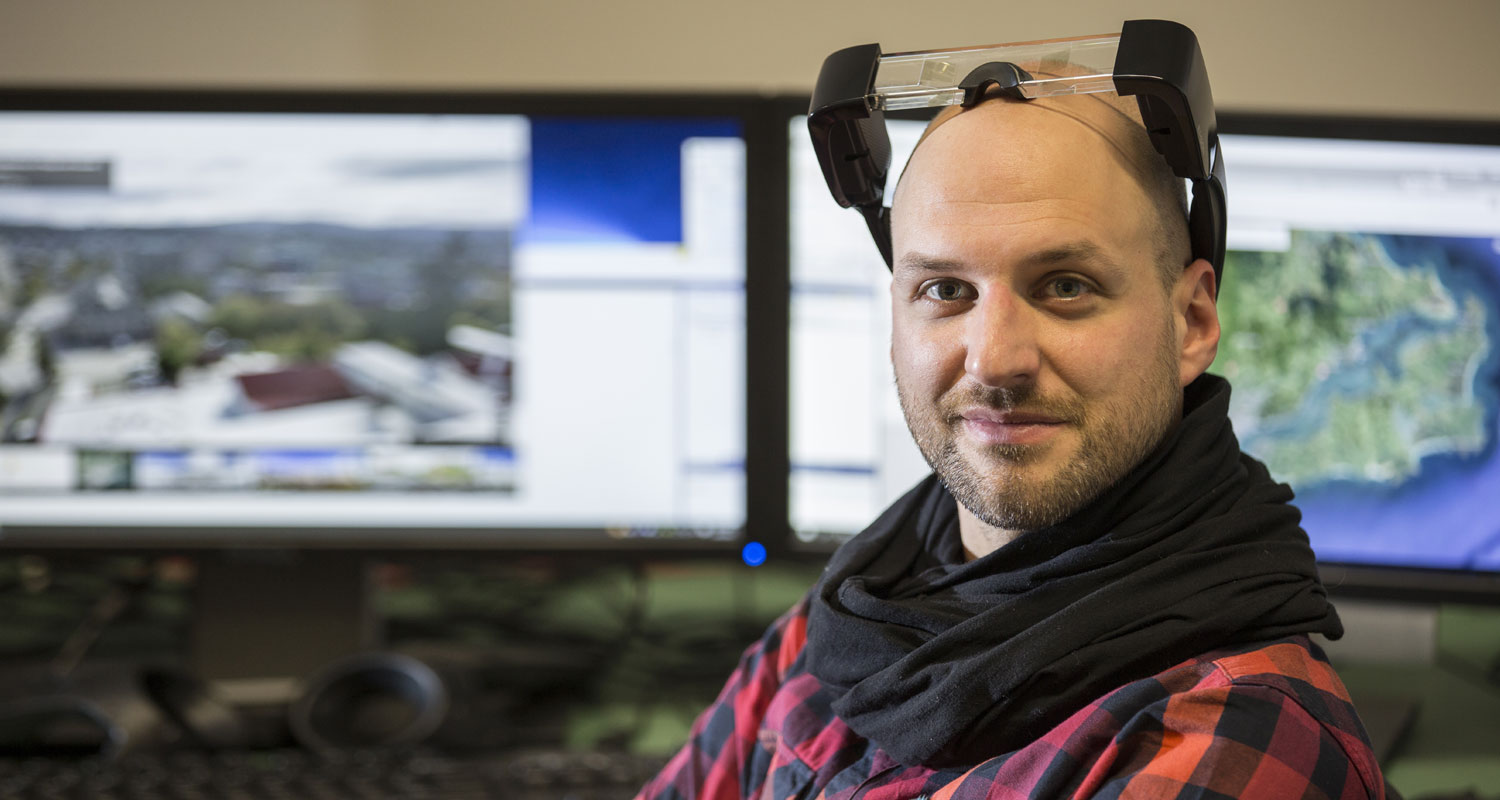
Augmenting reality
Augmented reality (AR) has the potential to revolutionise the way we receive and interact with digital information, but is it ready for continuous use?
AR enhances a person's existing environment by overlaying digital information in real time. The user sees overlayed digital graphics that could provide information about their surroundings or about virtual game objects, such in the current game hit Pokémon Go.
Dr Tobias Langlotz, from Otago's Information Science Human-Computer Interaction group, has become an expert for AR on mobile devices over recent years.
He is now researching dedicated AR devices such as head-mounted displays, including Microsoft Hololens or Google Glass, and is currently investigating technologies required for their daily and continuous use.
“Most augmented reality applications were written for short spontaneous usage of typically less than 10 minutes. Long-term usage therefore presents completely new challenges.”
In particular, he is asking:
- How do we ensure we don't miss important things in our environment, for example passing cars, because they are obscured with overlayed information?
- How do we interact with the displayed information, given there are no keyboards, generally no touchscreen, and future head-mounted displays will be as large as normal glasses?
- What applications benefit the most from this kind of technology? Perhaps surgeons viewing medical-related information, or building developers planning their building in-situ. Or it could be everyone accessing the information currently displayed on mobile phones or smartwatches.
“There's huge potential for augmented reality, but it will only have an impact on the future of personal computing if such questions are answered,” Langlotz says.